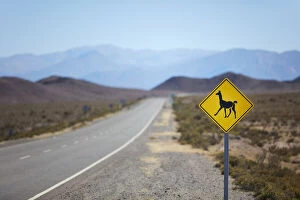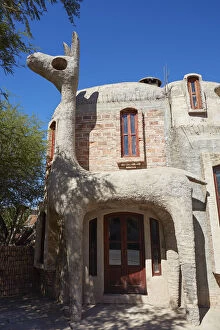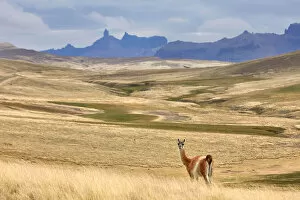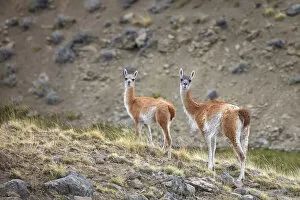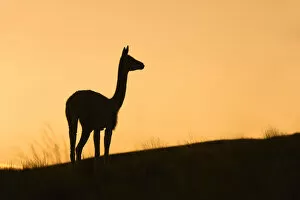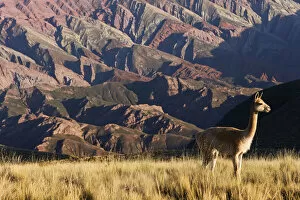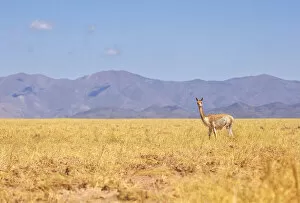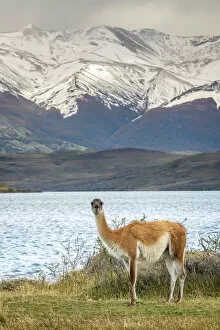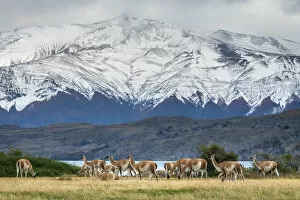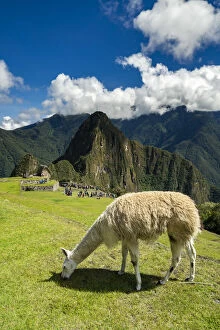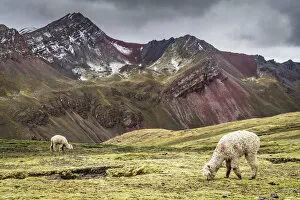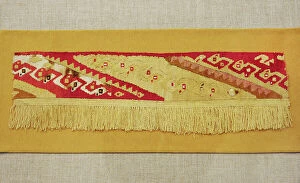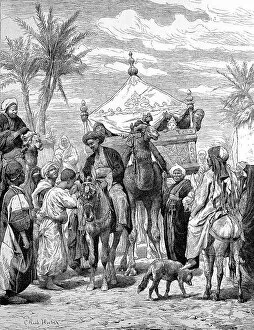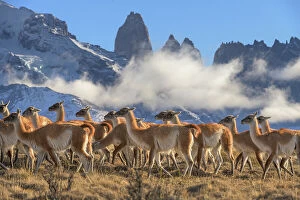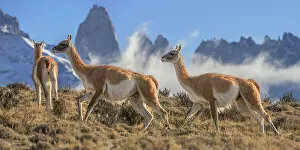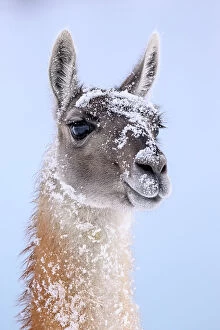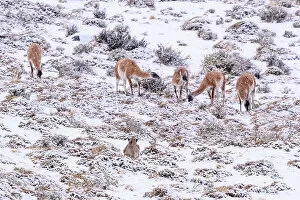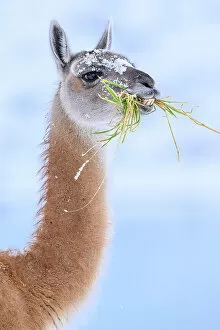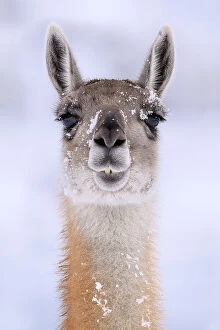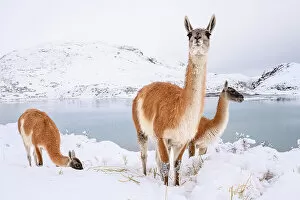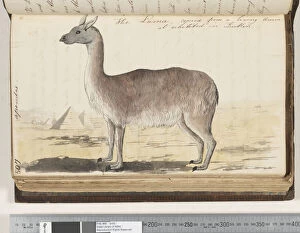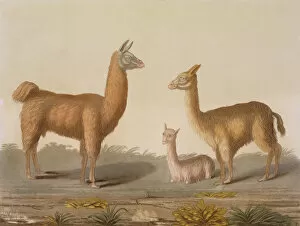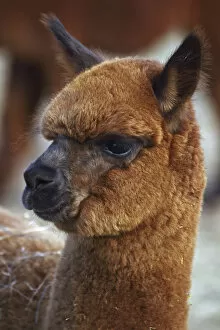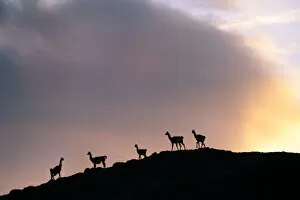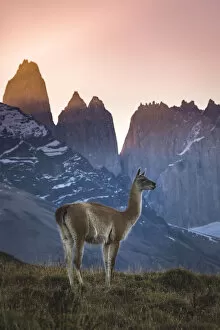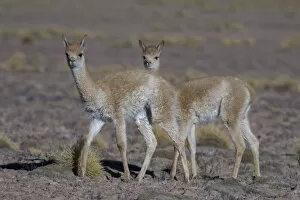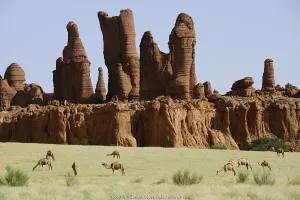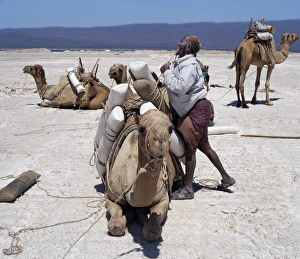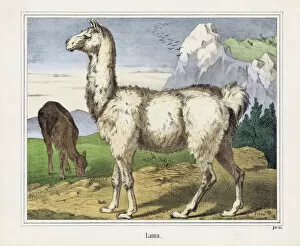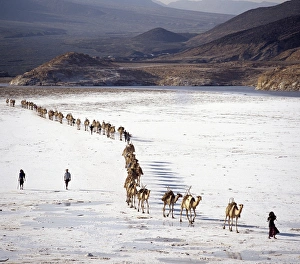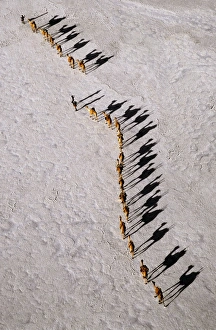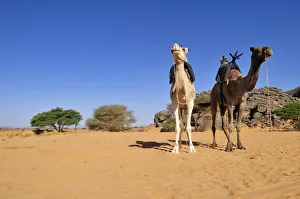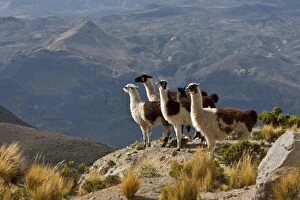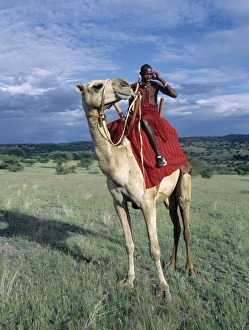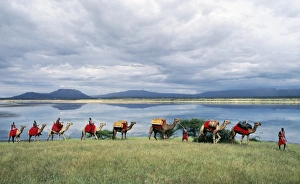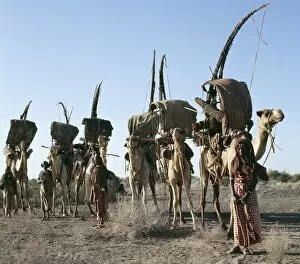Camelid Collection (page 2)
Camelids, a diverse group of mammals, have played significant roles in various cultures and ecosystems throughout history
All Professionally Made to Order for Quick Shipping
Camelids, a diverse group of mammals, have played significant roles in various cultures and ecosystems throughout history. From the Guanaco roaming freely in Punta Norte, Peninsula Valdes, Argentina to the extinct Aepycamelus genus that once roamed the Earth, these creatures have left their mark. In the 17th century, South American camelids were highly valued for their wool and served as a vital source of livelihood for many communities. The sight of a Bedu gracefully riding his camel amidst vast sand dunes evokes images of adventure and resilience. The young Lamas grazing peacefully on the altiplano of Atacama Desert in Chile symbolize harmony between nature and animals. Textile fragments from the Late Intermediate Horizon period showcase intricate craftsmanship using camelid fibers - evidence of their importance in ancient civilizations. A female Guanaco stands alertly while keeping an eye on a Puma lurking on an opposite slope - a testament to their survival instincts. Meanwhile, a playful Llama calf brings joy to Bolivia's altiplano during December 2016. On Norfolk Farm during winter, an Alpaca herd huddles together against the cold weather. These majestic creatures also grace Casa Condor in San Pablo Community after shearing on the Paramo - showcasing both their beauty and usefulness. The long-haired variety known as Alpaca Suri can be found near Cotopaxi volcano in Andes; its silky coat is prized worldwide for its luxurious feel. This stunning landscape is dominated by Cotopaxi Volcano itself – standing tall at 5897 meters – with herds of Alpacas dotting its slopes. Whether it's their historical significance or their presence within breathtaking landscapes, camelids continue to captivate our imagination. These remarkable creatures remind us of our connection with nature and how they enrich our lives through culture, textiles, companionship, and awe-inspiring sights like no other.

